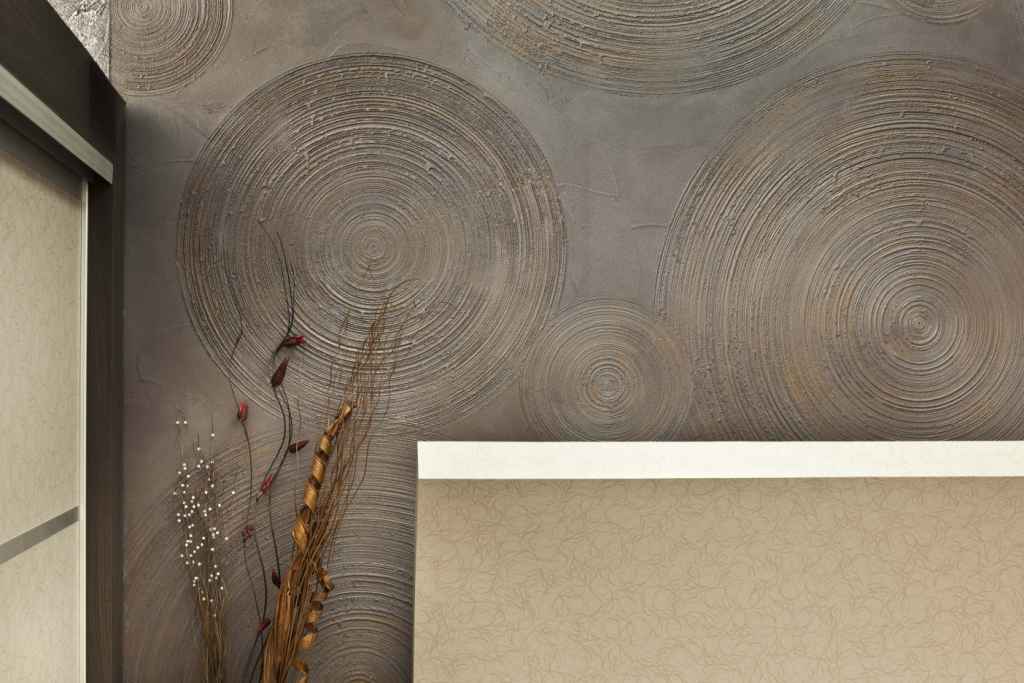Texture paints consist of coarse grains (such as gypsum, sand, etc.) metal, ribbon, lace, leather, etc with the water-thinned binder used for creating a rough pattern effect on a wall. They have become one of the most popular trends in painting as different types of styles can be created on the wall surface. They simulate two different senses: sight and touch. They are often used as an alternative to wallpaper and it is also a great solution to hide uneven and imperfect wall surfaces and even to some extent micro waves.
Application of a Textured Paint:
- Textured Paints are easy to apply. It can be applied by spray, paint brushes and paint roller. If you are planning to paint your house on your own than follow the “DIY” instructions on the manufacturer’s brochures.
- Premixed textured paints are “ready to use” available in the market and it can be directly applied to the surface. The premixed textured paint contains sand stone, marble stone, ribbon, lace, leather, mineral aggregate etc.
- Varieties of tools are also created for achieving different finishes in texture paint. These tools include sponges, spatula, styluses, specialised paint brushes and a paint roller.
- Textured paints can also be applied to old as well as the newly plastered surface.

Properties of Textured Paint:
Textured paints are basically water based paint. They are less toxic as compared to other oil based paints and almost all manufacturer companies claim that they possess “zero volatile organic compounds”. Washability of textured paint is medium to high level. Washability mainly depends upon the surface sheen. Some sheen is wipeable & some are washable depending upon the manufacturer’s guide. Textured paints are available in 1 kg, 5 kg, 20 kg packs. Textured paints are available in many finishes such as glossy, shiny finish etc.
Use of Textured Paint:
- Textured paint is used to cover imperfections. Cracks, holes, irregularity in concrete walls, old panelling, and uneven dry wall are easily and relatively inexpensively hidden with texture paint. It is generally more durable and is designed to hide imperfections of your wall or ceiling.
- Textured paint is also used to create dramatic and unique wall designs. It is used as an alternative to wall papers.
There are various products available for interior as well as the exterior surface in different ranges and under different brands. Some of the typical products of few companies are listed below.
Sr No. | Manufacturer’s Name | Product Name | Recommend Area |
| 01. | Asian Paints | Royale Play Antico | Interior area |
| Royale Play Dune | Interior Area | ||
| Royale Play Infinitex | Interior Area | ||
| Royale Play Metallics | Interior Area | ||
| Royale Play Safari | Interior Area | ||
| Royale Play | Interior Area | ||
| Royale Play Stucco Marble Finish | Interior Area | ||
| 02. | Saffire Paints | Textured Paint | Interior & Exterior Area |
| M Plast Textured Paints | Interior & Exterior Area | ||
| Natural Stone Textured Paints | Exterior Area | ||
| Spray Texture Paints | Interior & Exterior Area | ||
| Rustic Texture Paints | Interior Area |
Texture paint is also known as decorative paint. By using all above-stated tools we can easily execute the decorative paint on the walls. Decorative paint gives the good impression instead of other paint. Textured paints are also available in metallic, gold, silver and copper finishes. It needs less maintenance.
Also Read:
20 Different Types of Paints Used for Interior and Exterior Surfaces
All You need to Know about Emulsion Paint
All You Need to Know About Distemper Paint
Types of Paint Finishes and Sheens




